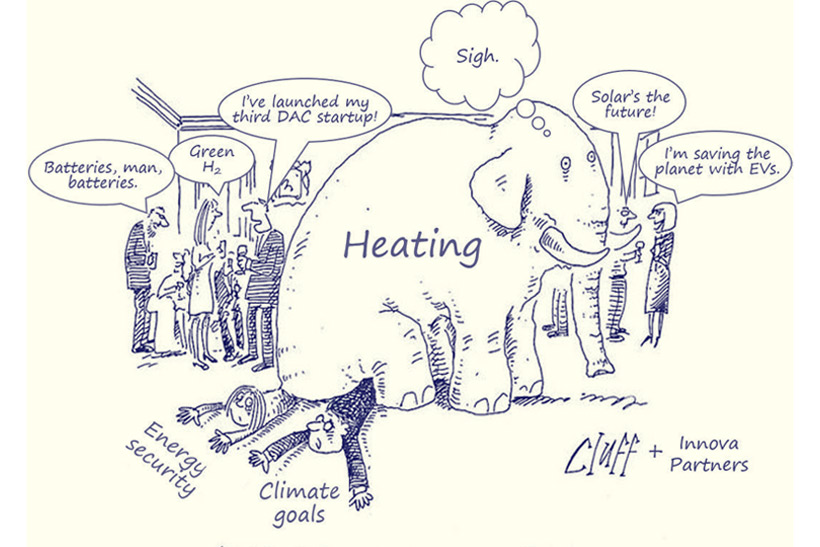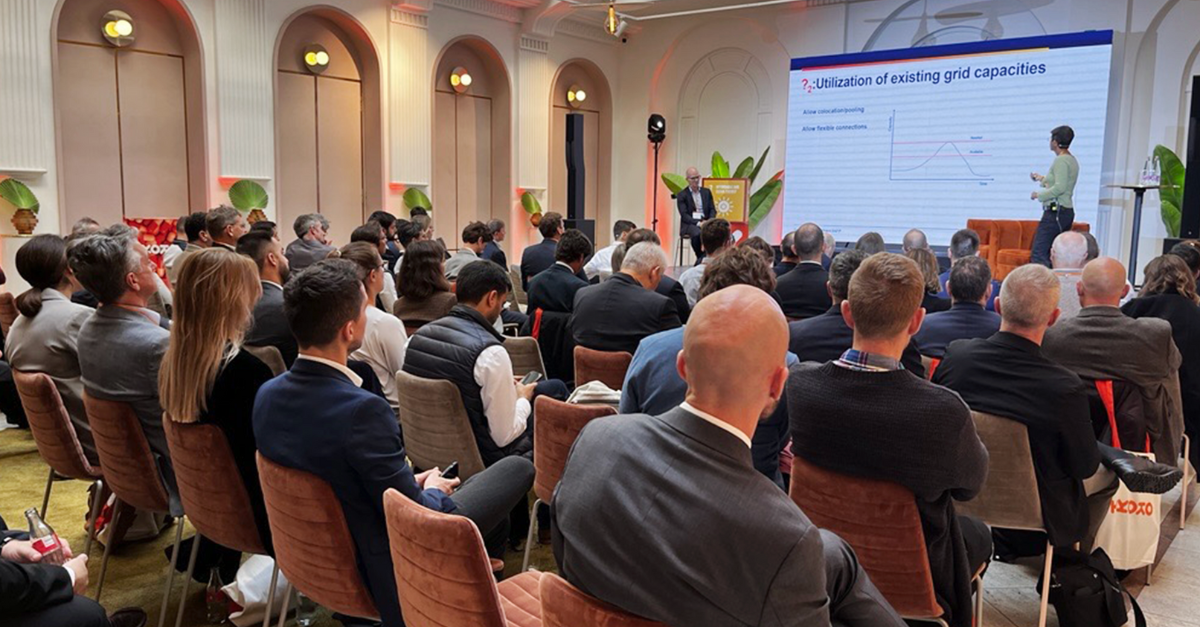The world is on fire. Every day we use energy to heat things, in order to make things. But Dr. Silvia Trevisan knows how to stabilize unreliable green energy, in order to decarbonize a whole industry.
– It is a problem that we do not talk more about the use of heat, and how we instead could use renewables rather than fossil energy for the industrial sectors that use heat, says Dr. Silvia Trevisan (29), a recent PhD graduate from KTH Royal Institute of Technology in Stockholm who is working on a project developing the Kyoto Heatcube battery.
– People are not really aware of the immense use of heat?
– No, because we don't see it, we don't feel it. But heat is used for basically everything. From the pillow you wake up on, via your vitamin pills, the mug you drink your coffee from, and the coffee itself, then the bike or car you take to work, the cement foundation of your office building. Everything has been pressed, formed, shaped and been in contact with heat in different forms when it was produced, Dr. Trevisan says.
– And most of the high-temperature heat in the industry, like for steel, is mainly run on fossil fuel right now?
– Most definitely.
Basically, everything you touch is made with heat
The biggest impact one could have – when it comes to improving the state of the planet – is within the heat industry, Trevisan explains.
– It is exactly here where we in a wider sense, could potentially make an impact for everyone, as we already have a solution, she says.
– Really?
– Yes, well, people, in general, might think the transport sector is to blame for most of the global pollution and CO2 gases, probably because we all see it in our daily life and “everyone” has a relationship with the car. But the reality is that about half of the emissions in Europe come from heating things. And around 22 per cent of those emissions come from the industrial use of heat, Dr. Trevisan says.
– And for that you have a solution?
– Yes, we do.
A question of conserving what you love
When Silvia Trevisan grew up by the ocean along the Italian Riviera, around the cobblestone streets in the ancient city of Genoa, she was fascinated by the metallic building block sets called “Meccano” in Italian, or “advanced lego” in Scandinavia. So when she chose the mechanical engineering route for her education and profession, via a bachelor and then a master in Genoa, and recently a PhD in thermal energy storage from KTH in Sweden – no one was surprised.
– I have always been interested in math and theory, but also the practical parts of engineering. Then, growing up near nature and liking being a scout running around in the forest, I naturally became interested in conserving it, and therefore went deep into energy, renewable energy, Dr. Trevisan says.
Heat is an almost invisible industrial challenge
During her PhD at KTH Dr. Trevisan designed, produced and tested a thermal energy storage application, and during her upcoming post-doc – supported and financed by Kyoto Group – she will continue to develop more similar systems for producing and delivering “green heat”. Mainly for use in the industrial sectors. Because it's very much needed. The industrial use of heat, and how it contributes to a lot of Co2 emissions, is an invisible problem. An elephant in the room?
– Yes, like a huge elephant thinking quietly about heat, in a room full of smaller animals talking loudly about solar, PV, electricity, hydrogen, wind and so on. And yes, it's great that the public is talking about these things, but we as scientists and researchers also need to be better at explaining how heat is a big part of the issue, she says.
– But you said you have already found a solution for part of this issue?
– Well, in the future we need lots of different solutions for energy storage, but yes, right now, we can already produce energy in a green way, and a rather cheap way too, via wind and solar energy for example. But as the weather is never stable, renewable electricity and in turn heat can not be used as reliably and flexibly as we would like. So, it needs to be stored in order to be delivered when it is needed, Dr. Trevisan says.
Use heat? Make it green? It needs to be stored
For the last five years, Trevisan has researched some of the best ways of storing heat.
– Yes, and I will continue to do so in the future, but right now Kyoto Group's Heatcube is already proven, especially for temperatures between 200 and 400 degrees celsius which is what many commercial industries normally use. Molten salts-based thermal energy storages, similar to the concept of the Heatcube, have been tested for years and the technology is mature. It is charging and storing renewable energy, which we must, if we want to continue using the enormous amount of heat in the industrial sector and also turn it green, says Dr. Silvia Trevisan before she adds:
– It's definitely challenging, but also very exciting.
8 Things you need to know:
- What is the largest energy demand in the world?
- Which sector emits more CO2?
- Which sector uses more energy, and for what purpose?
- How can thermal energy storage be used to decarbonize energy consumption?
- And at what temperatures?
- 3 ways of storing heat.
- How to get access to renewable energy at a low cost?
- How Heatcube can provide electrified heat at low CAPEX and low OPEX for decades?




